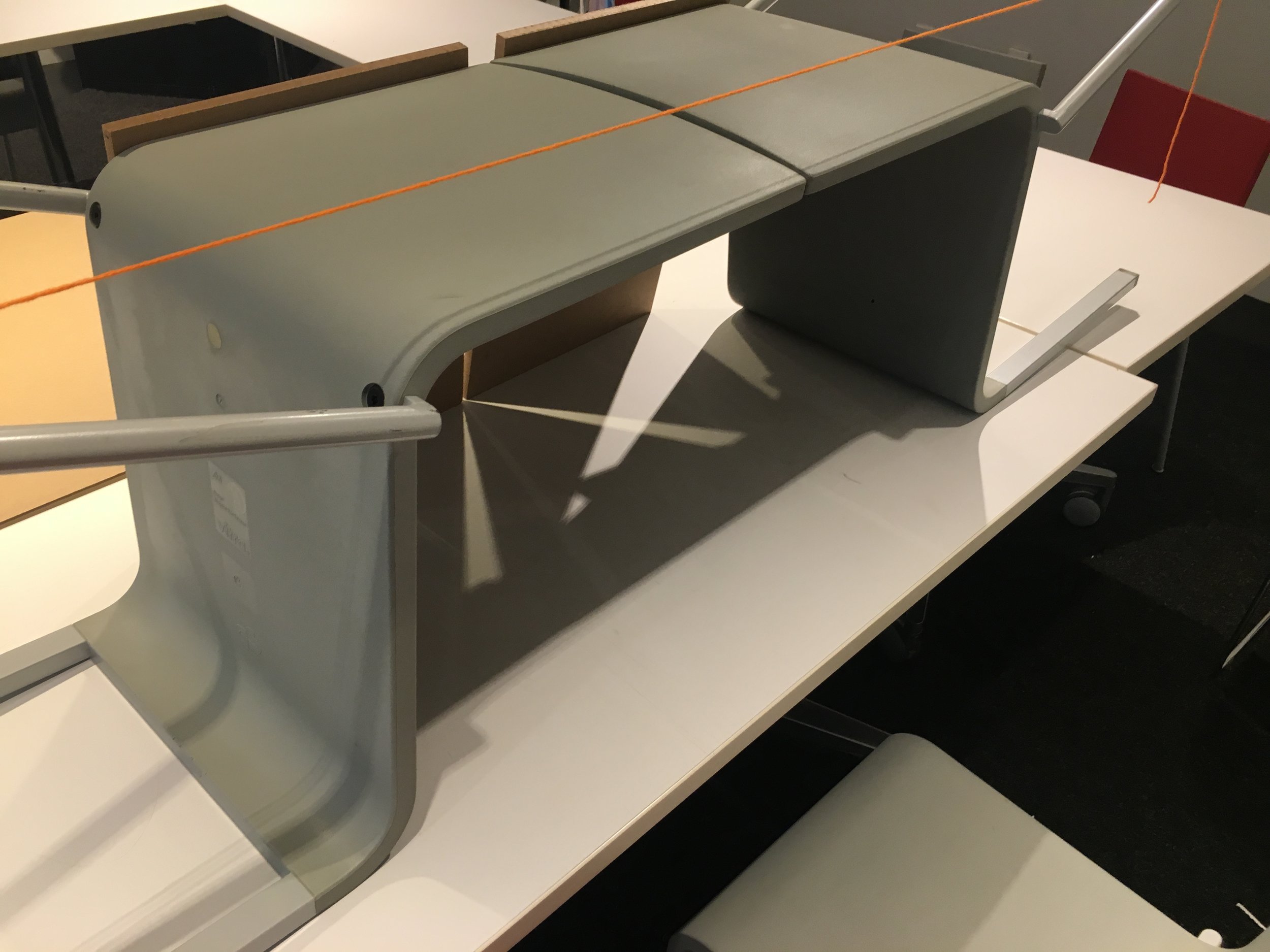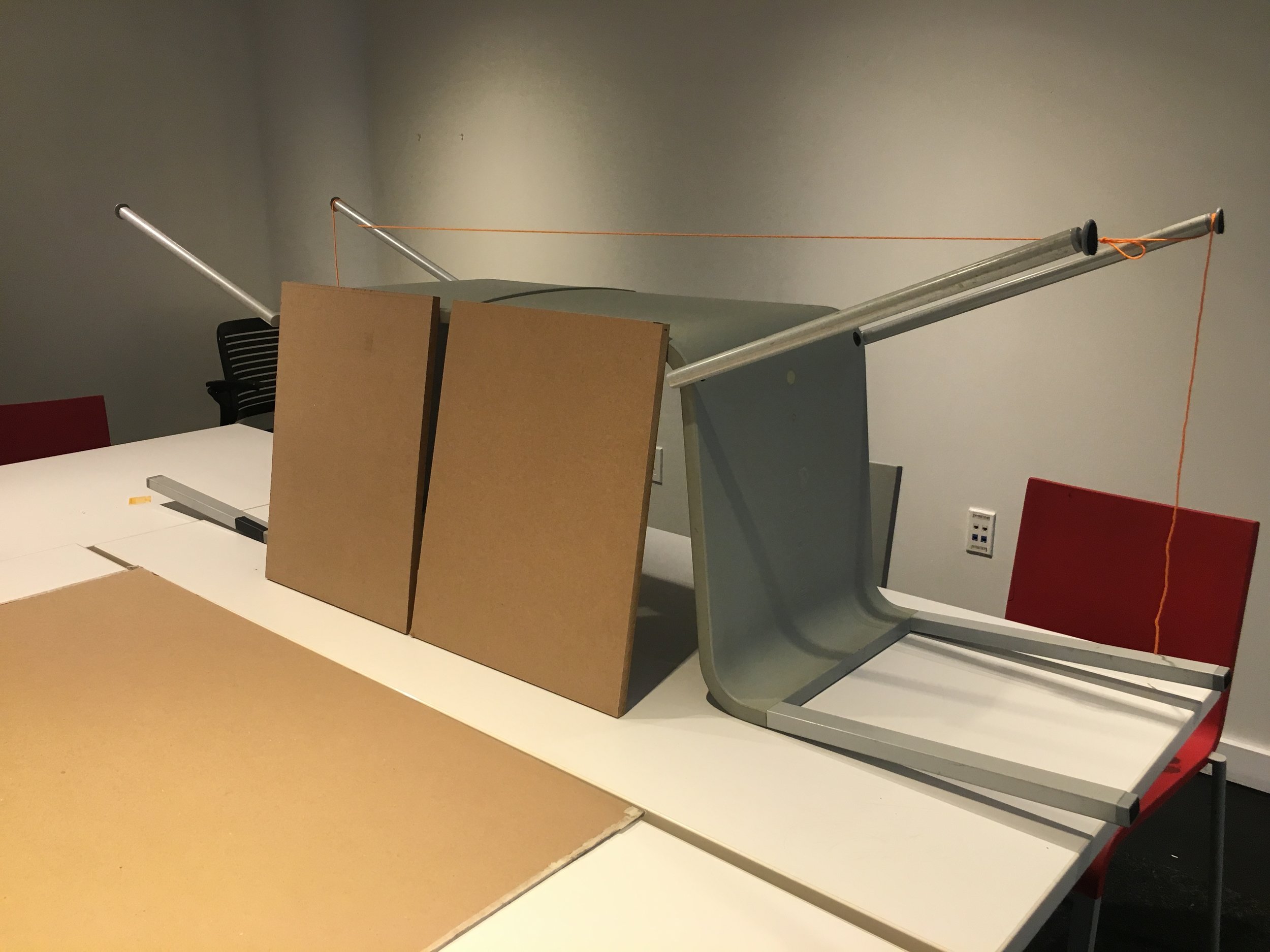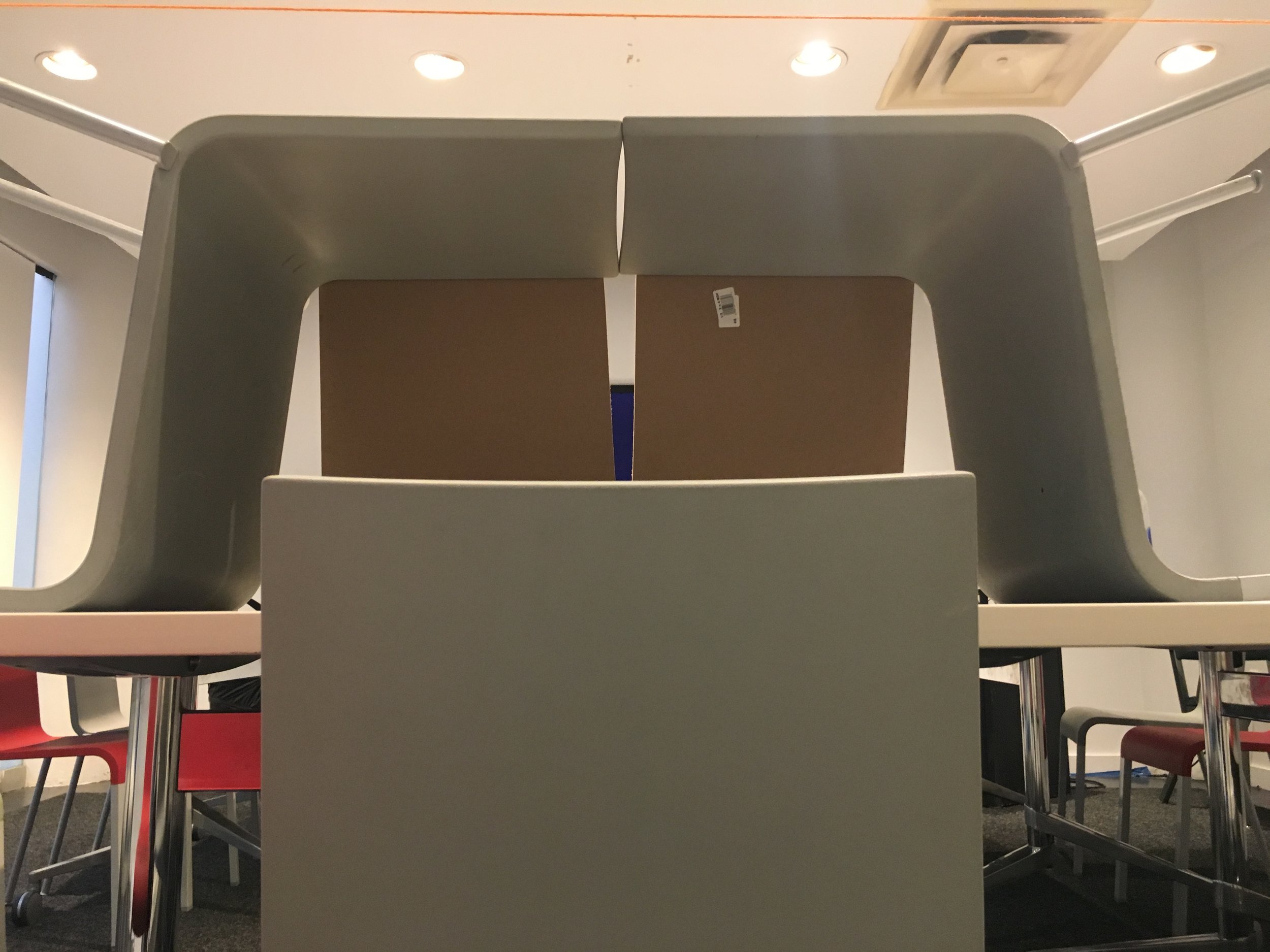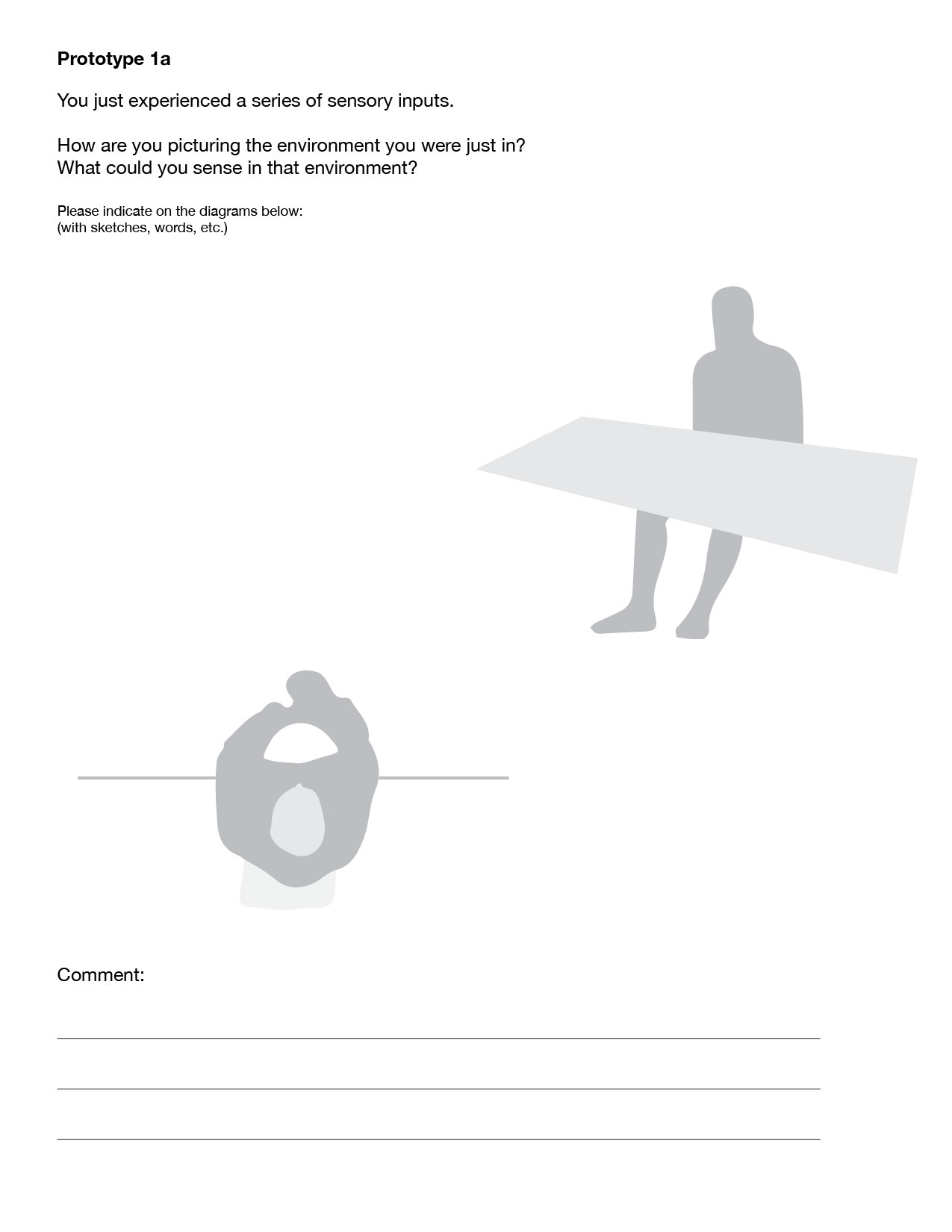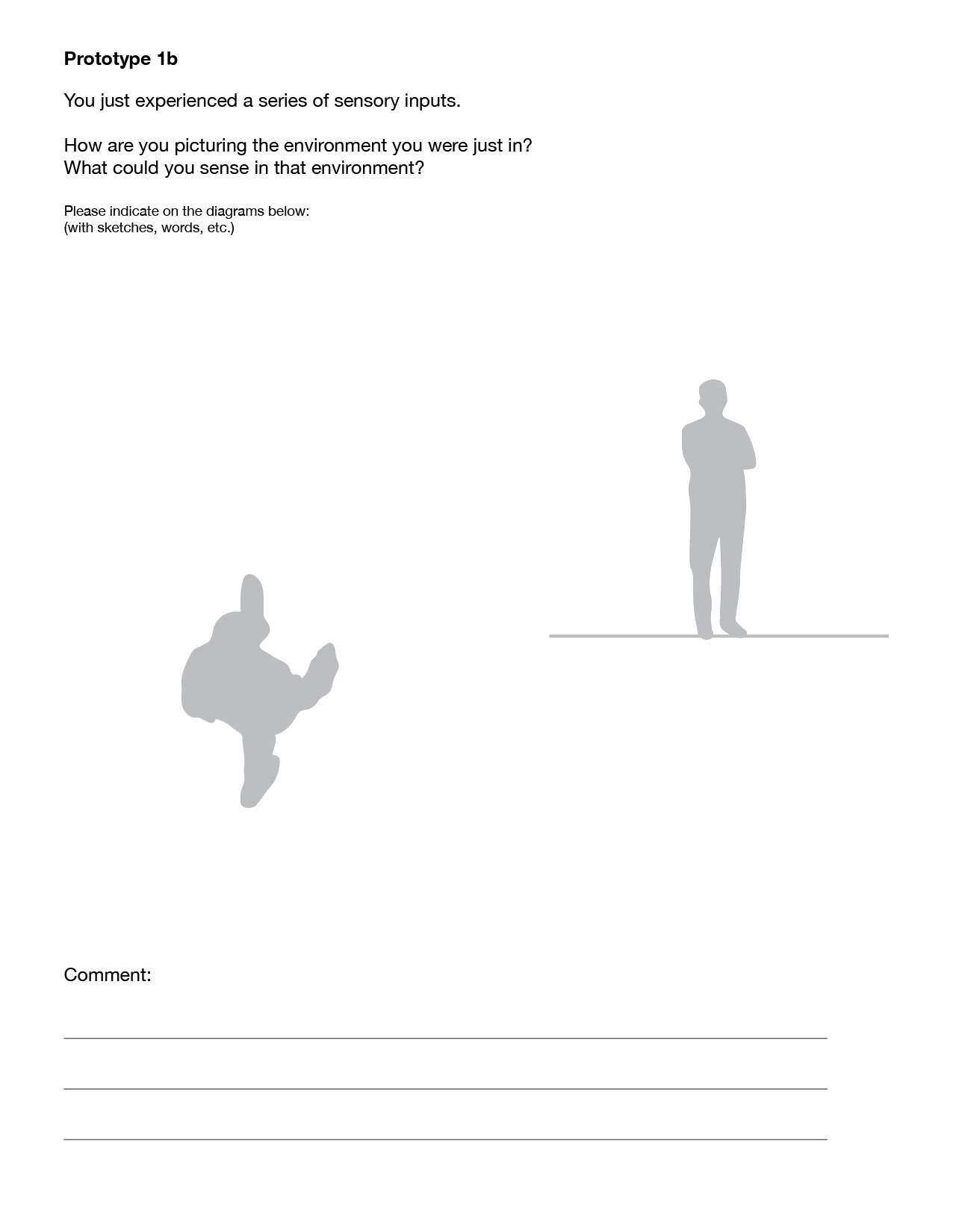Concept statement (Sep 19th)
This thesis project is an exploration on the terms “unreal realities” and “real unrealities”. I plan to create an experience in which the audience encounter a series of choreographed sensory inputs, in an unusual combination which causes cognitive dissonance. In the form of an interactive installation, this project aims to examine the idea that we are subconsciously constructing the reality we are a part of. As a result, I would like my audience to leave with a mindset of skepticism for their old practice of perception.
Stemming from this updated concept statement, I created my first prototype which focuses on the following design question:
How do people translate immediate sensory inputs and use the result to mentally construct an environment around them?
In this iteration, I invited my test subjects to join my on a journey, blindfolded. They were led from their various original location on D12 into a quiet room, instructed to sit still in a spot but free to move otherwise. The only sense they have to refrain from using is sight.
The series of Inputs I provided were:
- Clinking sound from a glass bottle, far away
- Push vertical boards close to the person to create a cubical
- Fan right next to the person to create a breeze, from the direction of where the person touched the cubical
- Light the lighter
- Sprinkling water from a wet napkin
I ran four tests total, on 2 DT students, 1 non-DT student, and another DT student. After the experience, I led them back to their original spot, still blindfolded. I then asked them to visualize the environment they just experiences both in words and in sketches. See below for the form I used for their response:
I conducted my interview right after each test-run, so I was able to adjust the next accordingly. Some changes I made in the process were:
- I started taking detours and span the subjects around, so the ones that are familiar to the floor plan of D12 would lose their sense of orientation.
- I added more events so that there are inputs from 360 degrees around the subject.
- I moved the close by chairs after they sat down to "trap" them in their seats.
A summary of interesting findings:
- Our sense of touch can sometimtes be incredible inaccurate in the way it helps us construct a mental image of objects.
- The most immediate input may overwhelm one's other senses and cause one to become unaware of other inputs, especially if the most immediate one is an input that you do not recognize.
- We are sensitive to the voice of others talking, 2 out of 4 subject described the room as a "get-away, meditation space" far away from the crowd on D12.
- The sense of time got elongated during this experience.
- One felt the room was a radically different size, and another thought there were multiple people in the room.
Prototype 2 proposal
In the next iteration of my prototype, I would like to further challenge the audience's control of their senses, and give them an opportunity to digest the disconnect between their perception and the physical environment. The way I'm planning to do so it:
I would instruct the subjects to wear a blindfold and earplugs, bring them into a room and do a choreographed experienment similarly. From then on, I would bring the subject back, interview them, and ask them to join me and perform the same experience to the next subject. Afterwards, I would interview both the performer and the subject.
With this format, the subjects will be forced to try to remember what they experienced, and think of the reality that could have generated their perception. As they look around the room to look for that piece of reality, they may or may not find it, and will need to re-access their memory and perception, while at the same time trying to create that perception for the next person.

